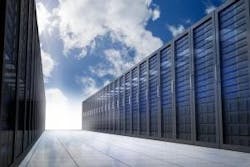The surprising announcement of GE CEO Jeff Immelt’s retirement at the end of 2017
Seeq's Michael Risse
sparked many articles comparing him to his predecessor, the legendary GE CEO Jack Welch. These reports raised questions about Immelt’s legacy, in particular his impact on GE’s stock price and investments in GE’s Predix cloud platform.
We know Mr. Immelt pushed GE to be a top 10 software company and own a new generation of software offerings for the industrial internet. We don’t know, yet, how the new CEO’s decisions will affect Predix’s success.
But questioning Mr. Immelt’s legacy in regard to GE’s cloud efforts is a fair line of inquiry. This topic will haunt many executives in the cloud industry as the number of cloud-computing providers shrinks from hundreds to just a few in a matter of years, which echoes as the American auto industry experience.
Seattle as the new Detroit
Today, a bird flying from the roof of Amazon’s downtown headquarters would quickly reach Microsoft headquarters, and on the return trip—with a slight jog north to Kirkland and then back over Freemont (a neighborhood of Seattle)—it could visit the development offices of Google’s cloud efforts. Along the way the bird would, with little more than a flap of its wings, also fly over Expedia.com, cloud-development centers for Facebook (1,000 employees and growing), Apple (it’s a secret!) and Oracle (700 employees), among other outposts for California companies and local cloud companies both big (Zillow.com, Avalara.com, Zulily.com) and growing (Avvo.com, Docusign.com, Socrata.com).
There are now more than 130 development centers in Seattle. In fact, the city’s explosive growth has The Economist magazine arguing that Seattle and Silicon Valley—with their horrendous traffic, income-inequality, and many corporate ties—are really a linked super-region rather than distinct geographies.
The coming consolidation
Not all companies will disappear, of course: many will exit in the form of acquisitions, vertical specialization, and by transforming into apps running on other companies’ clouds. In the time I spent on this article, for example, cloud IIoT platform Carriots was acquired by Altair, aThere are alternatives to a “Big Three” in the cloud space. We could witness a large number of competing vendors. Perhaps there will be just one winner due to network effects, leading to a “winner take all” outcome like Google or Facebook. This doesn’t seem likely—not with customers so focused on ensuring competition. More likely we will see consolidation, with customers balancing their investments to avoid vendor lock-in. Mary Meeker’s latest report on the internet notes that customers are increasingly concerned about vendor lock-in. And vendors are following suit—consider PTC’s (Thingworx) recent announcements on supporting multiple public cloud platforms, and SAP’s move to support Google’s cloud platform.
A few options—but not too many—is the most likely outcome.
Take the top three public clouds (Amazon, Microsoft, Google) and the top two industrial offerings (Predix, Mindsphere) along with the top IT-centric clouds (SAP, IBM Bluemix, PTC/Thingworx) and that equals eight. Why include Thingworx? Because while GE’s Predix has made the biggest marketing impact, PTC has made the biggest investment (as a percentage of its business) to build out a cradle-to-grave offering from PLM to monitoring to maintenance.
Eight companies. That’s it. Matt Littlefield at LNS Research is writing a report on twice that number of IIoT platforms and it’s hard to imagine (given the market size and clout of the first eight) who could be left? Of course, IIoT platforms are not the same thing as public clouds, but it’s getting hard to tell them apart with respect to IIoT support. Google recently announced the beta of a sensor-data-ingestion service (IoT Core) backed by BigTable for data storage and a portfolio of AI technologies. That may not make it a full IIoT platform with device management and connectivity capabilities, but is there any doubt it is now in the race?
Eight “big” cloud platforms with obvious IIoT chops. Or 15 IIoT platforms on LNS’ radar screen. But imagine all the IIoT platforms these lists don’t include...all the Machine to Machine (M2M) legacy platforms from Sierra Wireless Aeris and Kore Telematics. Or cellularThat’s why the Jeff Immelt question (What did you do for our cloud?) is so critical. Imagine growing your product offering 33% a year and failing to keep up with a 40% market growth. You could start from a small base and live for a while on an inflated growth rate, of course, but for the bigger players it’s either keep up or fall behind, and if you fall behind there’s no catching up through organic growth.
Through acquisition or partnership there may be opportunities—vendor #3 buys vendor #5 to become the new number #2—but this is desperate territory because this is enormously expensive and very risky. If you consider the IIoT cloud market as a stack rank of players with everyone that isn’t Microsoft or Amazon taking measures to make up the gap, their actions become much clearer.
Scaling up to drive down costs
The first auto-industry analogy for the cloud is location (Detroit vs. Seattle). The second is consolidation. The third is economy of scale. Every schoolchild knows the story of Henry Ford’s assembly line reducing production costs. Economies of scale will drive consolidation of the cloud market as well.
So what are the drivers of efficiency in the cloud and how do they affect key vendors?
First, the lowest cost of a reliable supply of electricity, which is hydro (if you’re in Seattle) and coal and natural gas across the country. This may change to solar and wind if the problem of electricity storage on a large scale can ever be solved. For now, those locales with a high percentage of solar and wind-generated power, like California, have some of the highest electricity costs in the US. While Seattle, in contrast, benefits from proximity to the mighty Columbia River and a series of dams with electricity costs below 5 cents/kilowatt. There is no obvious winner among the leader here, except to distance themselves from the followers who can’t buy or negotiate at the same scale.
The second economy of scale is the number of data centers: whomever has the most willIf infrastructure costs and investments are where the top vendors separate themselves from the pack, it is in services that they differentiate themselves from each other. Services include the benefits and advantages of one leading cloud vs the others. Google is betting big on AI technologies. Microsoft is taking a balanced approach of existing CIO/IT relationships, database innovation like CosmosDB, and cognitive computing. Amazon is focused on customers with a cost-first approach that dares anyone else to make a profit.
A winner-take-all model is the likely outcome for transition to the cloud; the most likely outcome of these aspects of economy of scale are simply more consolidation more quickly faster. There will be relative advantages in delivering cloud functionality, driven by who can minimize electricity costs, invest the most in data-center construction, and make the smartest bets on capabilities. But it’s currently hard to see any of the leaders failing, due to their relative advantages.
The road ahead
The industry has a long road ahead in the business of IIoT cloud-platform offerings. This much is certain. McKinsey & Company estimates that just 5% of IT data-center work has been transferred to the cloud, and only a fraction of the expected billions (trillions?) of IoT sensors have come online. The existing process-manufacturing market of DCS, SCADA, and HMI is largely untouched by cloud offerings, and manufacturers are the single largest creator of data in the world. Any of these momentous shifts in computing could reorder the market and change winners into losers.
While it’s far too early to predict those outcomes, barring something odd in domestic or legal requirements for the cloud we can expect three things:
- The road to cloud leadership will go through Seattle
- There will be a steady march to consolidation
- The cloud question attached to Jeff Immelt’s retirement is the right one—maybe the only one—worth asking of cloud-platform executives…What did you do for our cloud business?










